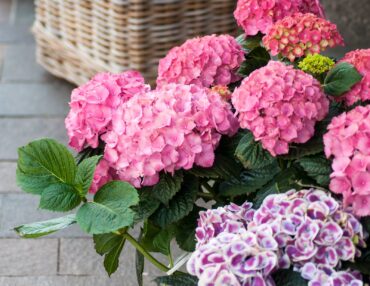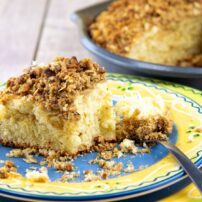 Winter can sometimes spell doom for hydrangeas across much of the United States, but not so this year. Winter was mild, with record-breaking warm temperatures in the northeast, where gardeners regularly experience angst about whether their big leaf and mountain hydrangeas will flower. The other factor that can thwart the flowering cycle is wild temperature swings in spring, but again that was not the case this year.
Winter can sometimes spell doom for hydrangeas across much of the United States, but not so this year. Winter was mild, with record-breaking warm temperatures in the northeast, where gardeners regularly experience angst about whether their big leaf and mountain hydrangeas will flower. The other factor that can thwart the flowering cycle is wild temperature swings in spring, but again that was not the case this year.
By this time, you should be seeing buds (if not flowers) on your plants. But maybe not. Let’s drill down to find out what happened to cause hydrangea mistakes.
Not Enough Sun
Yes, this plant is often listed as a plant for shade, but be smart about that. It is shade tolerant, not a true shade lover.
True shade-loving flowering plants like yellow bells (Kirengoshoma), monkshood (aconitum) and turtlehead (chelone) will give you flowers even when planted in total shade.
Not bigleaf hydrangeas: They need a half-day of sun, ideally morning.
Too Much or Too Little Water
Then there is this plant’s need for water. But here’s the trick: Too much is as bad as too little. Yes, this plant will droop when it’s in that morning sun and you’ll be tempted to immediately provide relief.
Don’t wait until the sun is off the plant so it can do this miraculous trick of rehydrating (if there is enough moisture in the surrounding soil). Watering the plant prematurely could kill it, as that water will take up necessary pore space below ground and displace critically important oxygen. Plus, excess water will lead to more leaves and fewer flowers.
If it doesn’t rehydrate by the next morning, then, by all means, give it a drink. But also take steps to address the moisture issue in the surrounding soil: Add compost to increase water retention and increase the depth of mulch to reduce moisture loss. Do a knuckle test regularly to check that water is getting down to the root area and keeping it moist. If all of that doesn’t work, consider moving your plant or altering your irrigation practices.
Pruning Incorrectly or At the Wrong Time
This is by far the biggest mistake we make. The truth is, if we never pruned this plant at all, it would be just fine. I’m not talking about deadheading, i.e., removing the spent flowers. I’m talking about cutting back stems either at ground level or somewhere along the stem below the flowers. It’s reasonable to want to remove the dead, damaged and diseased wood but there is no need to go further.
Plus, you need to keep in mind the timing of your pruning. Fall is not the time to do it, as these hydrangeas have begun to set their buds for next year (old wood). Those old wood stems have to make it through the next several months without damage.
Inadequate Winter Protection
When our plants are exposed to chilly prevailing winds and winter weather, those sleeping buds can easily succumb to Mother Nature’s wrath.
Our hydrangea mistake is not taking steps in the fall to protect susceptible plants from those onslaughts. A simple cage constructed from chicken wire and stuffed with leaves, straw, etc. can go a long way to helping those buds survive.
Deadheading at the Wrong Time
Deadheading can be another mistake if done at the wrong time. Keep in mind that when you deadhead, you are essentially removing the “umbrella” effect that a spent flower head provides to the plant during winter.
Further, deadheading after Aug. 1 adds insult to injury, as that stimulates a growth response in the plant that essentially distracts it from preparing for the oncoming dormant season.
The easy solution is don’t do it if you can avoid it.
So now that you know about hydrangea mistakes, why not just sit back and enjoy your flowers this year? There will be time enough later on to tackle the few things you should do.
























